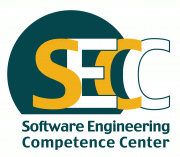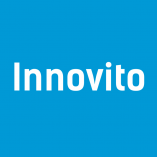You are here
What Innovation Is and Isn’t

Are you confused about what innovation really is? If so, it’s probably not surprising. It’s widely written about in many different contexts, but with different impressions and about different things. So in an attempt to get a few things off my chest…
INNOVATION IS NOT ABOUT LIGHT BULBS
The old fashioned incandescent light bulb is still the default symbol for innovation. Just run the word “innovation” through Google Images and you’ll find page after incessant page of light bulb graphics. Whilst there are many aspects of innovation writing that inspire and inform, and from which I learn constantly; quite often the representation of innovation in the media relies on this tired old metaphor.
The message is that innovation is about ideas; that they magically appear at the mythical “eureka” moment; that a spark of genius creates the next big idea when the “light comes on”. Well, it’s not like that. Good ideas rarely happen as a result of individual inspiration, as Steven Johnson outlines in his excellent book, Where Good Ideas Come From.
I know Edison was a brilliant innovator, but even he did so much more than the light bulb. He was also surrounded by a lot of talented others, as were other “hero” innovators often depicted as a lone genius. So please, stop using light bulbs to represent both ideas and innovation, it’s lazy and inaccurate.
Which leads me to…
INNOVATION IS NOT ALL ABOUT IDEAS
A great idea is a solid foundation for innovation and is a pivotal part of the innovation journey. But an idea by itself is worthless unless something is done with it.
Ideas are just near the start of an arduous process requiring a lot of hard work. It should start with strategy, then there should be a clear view of customer needs, habits, beliefs, practices etc, to use as stimuli for the creative phase. Once the idea has been generated, it must be validated. And then the really hard work starts – development, implementation and market growth.
A lot of idea literature also seems to stem from a context in which companies are starved of ideas, bereft of inspiration and desperate for the next burst of creativity. In my experience, many companies have far more ideas than they can exploit; their issues are ones of prioritisation in development, and choosing which ones to launch. Paradoxically though, the really good companies who have lots of ideas never stop generating new ones, even if they face real issues of prioritisation. They constantly seek better options.
INVENTION IS NOT INNOVATION
Investment in technology at the front end doesn’t immediately result in innovation, it results in inventions. An invention by itself is essentially worthless. It only has a tradeable value if somebody else wants to buy it. It is only once it is exploited and starts adding value that it becomes innovation.
Original inventions can be protected through intellectual property such as a patent. But the fact that the vast majority of registered patents are never exploited underlines the point that an invention is a precursor to innovation.
Usually, “necessity is the mother of invention”. Starting with an invention and hoping to create a need is very tough. Very occasionally though,“invention is the mother of necessity”, as in the case of the iPad, something that not only tapped into existing needs but created new habits. 99% of the time it’s the other way round, an invention is mostly a step on the way to innovation. Great inventions which tap into needs and opportunities can be a tremendous foundation for the ensuing innovation.
INVESTMENT IS NOT INNOVATION
I regularly see reports talking about investment in infrastructure, government spending and industrial spending on innovation Here is an example. This is all laudable, and often an essential input to the innovation that will result. But that’s what it is – an input.
INNOVATION IS…
Innovation is an output. It’s when something new is implemented that adds value to the organization. It can come in different forms, but the best form of innovation is one that adds substantially and sustainably to the top and bottom lines of the P&L.
Call me a pedant if you like, but I think it’s important to distinguish what innovation really is, and what are, albeit important, steps along the way. What else do you think is confusing and wrong about how innovation is described and depicted?


































































EgyptInnovate site is not responsible for the content of the comments